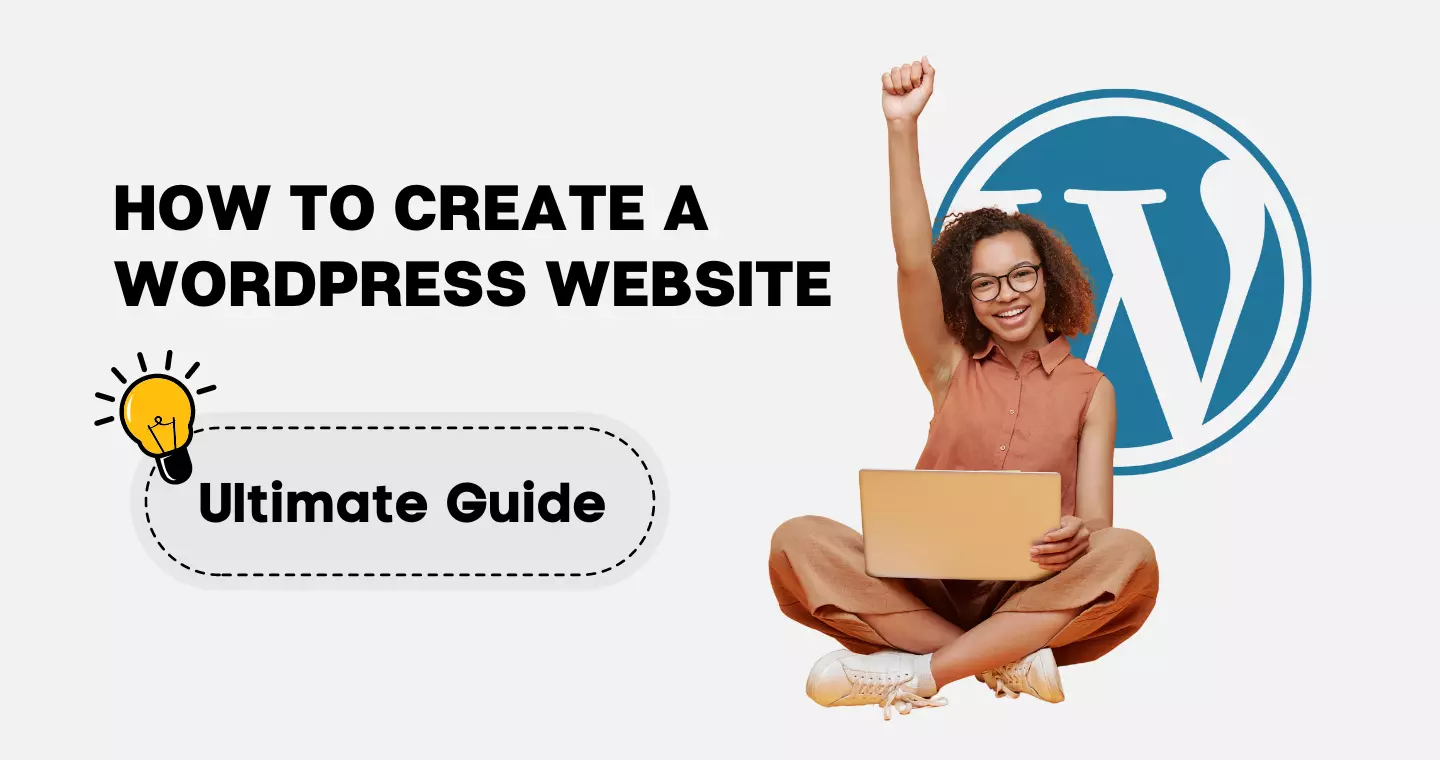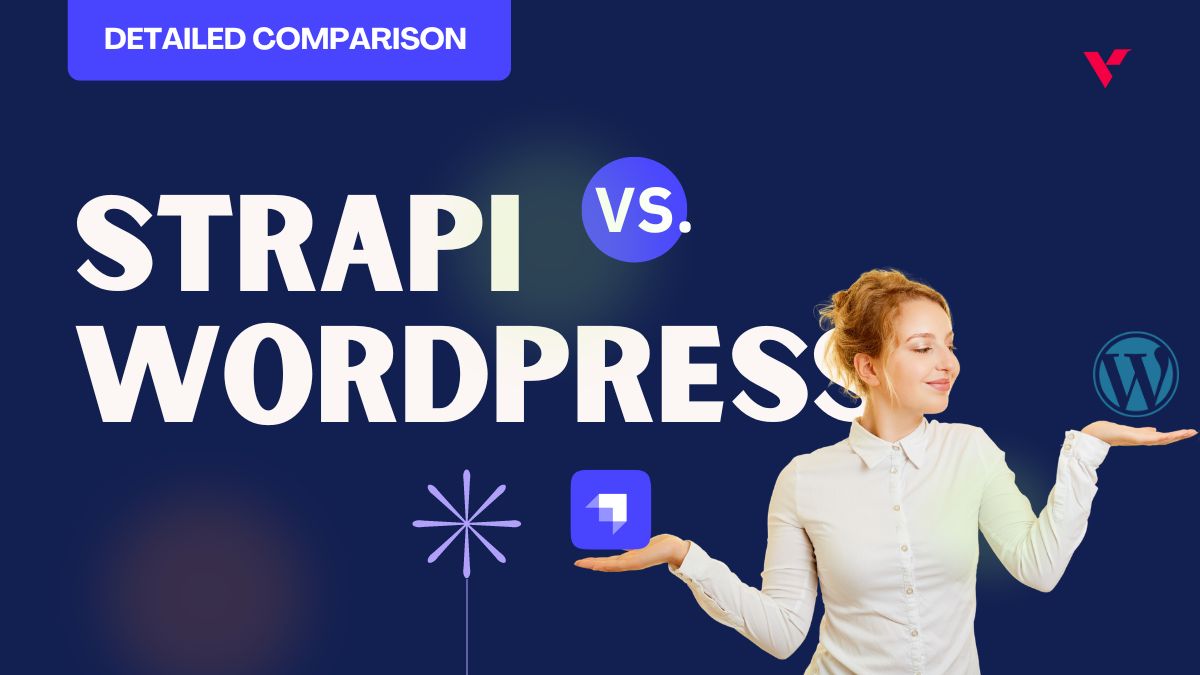Popular Tools by VOCSO
If you’ve never done anything remotely like this before, building up your WordPress website may seem like an insurmountable challenge. To our great fortune, one of the most beneficial aspects of WordPress is that it is so user-friendly and easy to use. Almost everyone is capable of doing it!
Knowing what to include on your site and how to make things fit for you might be challenging, despite the fact that the technical aspects of putting up a website with WordPress are not difficult.
However, before we get into the stages, let’s define what a WordPress website is, why you should select it, and what you need to take into consideration before you start developing a website using WordPress.
- Why Should You Create Your Website Using WordPress?
- Compare and contrast WordPress.com vs WordPress.org.
- How to Construct a Website Using WordPress
- What exactly is a website that uses WordPress?
WordPress is a content management system (CMS) that is written in PHP and combined with a MySQL or MariaDB database. It is available for free and open source.
In its most basic form, WordPress is a website builder that provides a platform that is both open and free to users. Using WordPress, users can easily create websites for their businesses or blogs.
On WordPress, you’ll find a wide variety of features, such as different themes, plugins, and add-ons, as well as pre-built websites that are ready for you to personalise with your own information and publish online.
There are a variety of approaches to developing websites; nonetheless, WordPress has consistently been regarded as the most well-liked and widely utilised open-source platform for developing websites. Are you curious about the reasons why so many people prefer WordPress to other platforms?
Table of Contents
Why should you create your website using WordPress?
WordPress is one of the most popular website builders and content management systems in use today. WordPress powers millions of websites, including some of the largest and most popular ones in the world.
By using WordPress you can build different types of sites like Blog, Microsite, Business Websites, eCommerce Websites, etc. Creating a website with WordPress is easy and there are plenty of themes and plugins available to make your site look and function exactly how you want it to. Plus, there is a large community of WordPress users and developers who can offer support and advice if you need it.
You can also secure your WordPress website by using this platform. And while no platform is completely secure, there are steps that you can take to help protect your WordPress site.
Building up your WordPress website is a great way to increase traffic and build an online presence for your business. In spite of the fact that WordPress was initially developed as a platform for blogging and other forms of publishing, it has since grown to become the foundation for one-third of all websites on the internet. This is because WordPress provides website owners with a plethora of benefits, some of which include the following:
1. Ability to be Flexible and Adaptable
WordPress is so flexible that it can be used to create virtually anything, from personal websites to online shops. WordPress is flexible enough to accommodate whatever you decide to do with it.
2. User-Friendly
Even if you have no prior experience or knowledge in web development, it will only take you a few minutes to get a WordPress website up and running. You won’t need much more than a domain name and an account to host your website.
3. Themes in addition to Plugins
WordPress themes provide you with a lot of flexibility in terms of the look and feel of your site, but plugins add functionality like shopping baskets, contact forms, portfolios, and more.
4. Superior in standing
WordPress websites typically rank higher in search results than websites that are not built on the WordPress content management system.
This is due to the fact that WordPress websites have a large user base and frequently add new content. In addition, WordPress websites utilise a wide range of plugins and other tools that assist them in creating scheduled and optimised content.
People have even more reasons to pick WordPress in addition to these advantages. Some of these reasons include the fact that WordPress websites are mobile-responsive, have a built-in blog, and provide excellent customer care.
5. Cost effective
Building a WordPress website can be an extremely cost-effective way to get your business online. Not only are you getting a dynamic, cutting-edge platform that offers great SEO potential, but you’re also getting the help and support of one of the world’s most popular content management systems (CMS). Considering all these factors, it’s no wonder so many small businesses choose to go with WordPress as their CMS of choice. Wondering how much it costs to build a WordPress website? Check out our detailed article on the WordPress website cost.
If you’re planning to develop a new website and want to know the estimated cost then you can try a free WordPress website cost estimator by VOCSO. This tool will provide you with a detailed breakdown of the costs associated with designing and developing a WordPress website.
Now that you are aware of the benefits of using WordPress for your website, you should also be aware that WordPress.com and WordPress.org are not the same things. There is a difference between the two. Find out more by reading on.
Which should you choose between WordPress.org and WordPress.com?
Many people are under the impression that.org and.com both refer to the same version of WordPress.
When you host your site on WordPress using WordPress.org, you have complete flexibility of change and personalization of web design.
Using WordPress.org is advised if you are familiar with how WordPress functions. When you host your own website, you get access to the most customised website builder available.
On the other hand, WordPress.com is a service in which WordPress.com manages your website on your behalf, including the hosting of the website. In this manner, you will have fewer choices in the design of your website. Nevertheless, it is easier and simpler, and it is recommended that you use it if you are just starting off.
Now that you are familiar with the history of WordPress and how simple it will be for you to create a website, let’s get started learning how to create a website using WordPress.
How to construct a website using WordPress
Getting started with WordPress is a breeze and only requires ten simple steps. If you simply follow them, you will have everything working properly in no time at all.
Step 1: The first step is to identify your site’s purpose.
Before you do anything else concerning WordPress, you need to decide what area of expertise you want to focus on.
It is not going to be productive for you to try to create a website using WordPress about a topic that has already been completed 10,000 times.
If you’re not using WordPress for an established company’s website, you should be sure to choose a subject that actually interests you. This will ensure that updating your site won’t feel like a chore, either now or in the months to come.
Step 2: The second step is to pick a name for your website’s domain.
Your choice of topic in step one should have some bearing on the name you choose for your website’s domain, and the name should be simple enough that visitors won’t be able to forget it even if they try.
Researching relevant keywords can also prove to be beneficial. Stuck on a specific name, yet the.com domain is already taken? Try the .net or .co extension.
Step 3: Third, sign up for hosting services.
The next thing you need to do is locate a trustworthy web host who can manage your website. What are the differences between a shared server and a dedicated server?
In most circumstances, shared web hosting will work just fine, and users of WordPress tend to gravitate toward this type of hosting. Below, you can find additional information about the various forms of web hosting.
Hosting That Is Shared
The most fundamental form of web hosting is known as shared hosting. It is similar to renting a house with one or more roommates, however, in the case of web hosting, the number of people who share the space can range anywhere from a few hundred to several thousand.
When you sign up for shared hosting, the domain of your company will be stored on the server alongside the domains of all the other websites that use the same hosting plan as you do.
The lowest possible price is the most obvious benefit of shared hosting. Because the same web hosting service is being provided to thousands of different parties, the cost of the server is being split, and as a result, service providers are able to provide very reasonable rates.
Second, shared hosting is extremely user-friendly and uncomplicated, making it ideal for novices.
Shared hosting has many advantages, but it occasionally suffers from the “bad neighbour effect,” which results in decreased performance or even outages.
Even the line for customer assistance is constantly backed up. You are unable to personalise your web experience, which prevents you from influencing how other websites function. This is another disadvantage. The use of shared hosting is beneficial overall.
Hosting on a Virtual Private Server (VPS)
Shared hosting is comparable to renting an apartment where you share living space with other people, while virtual private server hosting is more akin to renting a private apartment.
VPS hosting is significantly more attractive than shared hosting because it offers a greater number of benefits, some of which are increased reliability, improved and more even resource allocation, increased flexibility, and the opportunity to raise the number of resources that are made available to you.
Having said that, VPS hosting can often be significantly more expensive than shared hosting, but this difference in cost is highly dependent on the web hosting company.
Hosting That Is Dedicated
Large corporations that run a number of websites frequently opt for dedicated hosting for their infrastructure. With dedicated hosting, you get your own personal server and benefit from all of the features that come with it. There are no unsavoury neighbours, there is no threat to your safety, and you have complete leeway to personalise your space.
Dedicated hosting is not something you should consider if you are just starting out in this field because it involves a significant increase in both cost and technological complexity that is not justified until you already have a decent amount of experience.
Second, because you are placing all of your information and websites on a single server, even a relatively minor security breach on that server might compromise the integrity of the entire server, which would affect all of your websites and information.
There are further varieties of web hosting available in addition to these three fundamental kinds, such as cloud hosting, enables the transfer, and self-serve hosting. A piece of advice: if you’re starting from scratch with a website for your new company, you should start with shared hosting and build from there.
Step 4: Installing WordPress is the fourth step.
It is ready to implement WordPress and get your website up and running once you have discovered your web host and chosen a domain name for it.
I say this at the risk of stating the obvious.
Step 5: Select a template for your WordPress website.
Your next step is to select a layout for your WordPress website by selecting a design theme. There are tens of thousands, if not hundreds of thousands, of themes to choose from, and their prices range from zero to several hundred dollars.
When choosing a theme for your website, you should make every effort to ensure that it is relevant to the subject matter of your site as well as the structure and material that you intend to publish.
There are premium WordPress themes available. You can get a variety of pre-made alternatives for different themes if you look through the WordPress theme selections.
These can encompass commerce and services, aesthetics and fashion, photography and instruction, culinary arts, and a wide variety of other fields. Each one of them has the potential to develop into an outstanding foundation for the site that you have always fantasised about.
The Monstroid2 theme is an extremely lightweight multipurpose theme that comes with a drag-and-drop builder. It is one of the most popular premium WordPress themes available.
Step 6: Installing WordPress plugins is the sixth step.
A programme that extends the functionality of a WordPress website by adding new features or services that are written in the scripting language PHP is known as a WordPress Plugin.
Adding a WordPress plugin to your website adds a significant amount of control and flexibility to your WordPress site, in addition to providing your users with helpful features and tools.
You might not begin with a large number of plugins, but as your experience with WordPress grows, you’ll discover more and more that can help your website. JetPack, Classic Editor, Jetpack, BuddyPress, WPForms, AccessiBe, All In One SEO, and Yoast SEO, WP Rocket, are a few of popular among these plugins.
If you want SEO specific plugins then you can check out this topic on the best WordPress SEO plugins.
From the administrative dashboard of your WordPress site, you can access the Plugins menu item.
Step 7: Seventh, fill out all of the necessary paperwork.
Your website must have a contact page, about page, privacy page, and disclaimer page at the very least. Get these out of the way before you concentrate on adding content to your website; after all, it is far simpler to add them now rather than later, when you are through producing all of the other, more exciting material! These pages serve another purpose, which is to safeguard both you and the people that visit your website.
Step 8: Eighth, make your WordPress site public.
When you’ve finished publishing the necessary administrative pages, it’s time to start adding material that users will find interesting. No matter what your area of expertise is, you need to make sure that you provide sufficient high-quality material for your audience.
Make your sites as visually appealing as possible, and make it a top priority to keep updating fresh information on a consistent basis. If you are writing a blog, try to include an image in each article.
This not only gives your viewers something to share on social media, but it also makes the content that you have published more appealing to read.
Whether you choose to add new material once a day, once a week, or once a month, developing a content calendar will assist you in staying on track with your publishing schedule.
Step 9: Don’t neglect marketing!
There are two aspects to consider while marketing your new website.
First, in order to optimize your website for search engines (SEO), check that the title, description, and body content of each page contains appropriate keywords. There are many keyword research tools available online. These tools can help you find related keywords and analyze your competition. If you don’t know about SEO then you don’t need to do it yourself because bad SEO optimization can hurt your domain value and business. For improving your website’s search engine optimization (SEO), you’ll need the help of a professional SEO company.
Second, you should make an effort to publicize your website in any way that is feasible. Utilizing the forums of social networking websites and sending out a regular email newsletter are both free choices.
You might also enhance your social connections and increase the popularity of your links by contributing as a guest blogger or commenter on other people’s blogs, forums, and communities. There are many websites that provide guest posting opportunities. Use guest posting sites to get your blog content seen by a wider audience.
Step 10: Step ten is to create a backup of your website.
Your material is your most precious asset, therefore make sure you back up your site! In the case of your blog, this implies creating backups of your content in the event that it is lost, so that you won’t have to begin writing new posts from scratch.
It’s possible that it will take you some time to get back on your feet if you don’t back up your content, plugins, and affiliate links. If you don’t have the time to perform frequent backups of your website, your web server should provide you with an option.
How can VOCSO help?
Our company is a leading WordPress development company that focuses on developing high-quality, performant, and user-friendly websites. We take our job seriously, and we appreciate the importance of customer satisfaction. That’s why we offer a 100% satisfaction guarantee on all of our work.
We pride ourselves on being a reliable and trustworthy organization, and we are committed to providing the highest quality work possible. We take our clients’ needs and requests seriously, and we strive to always exceed their expectations. Please do not hesitate to contact us if you have any questions or concerns about our web design and development services or if you need help with anything related to white-label WordPress development.
If you’re thinking of starting your own business or looking to revamp your current website, WordPress is a great platform to use.
I hope you have found this tutorial on how to create your own website using WordPress helpful.
So, there you have it: WordPress broken down into ten simple steps.
We also provide dedicated resources for hire:
- Hire AngularJS Developers
- Hire ReactJS Developers
- Hire Dedicated PHP Developers
- Hire Laravel Developers
- Hire NodeJs Developer
- Hire NextJS Developers
















